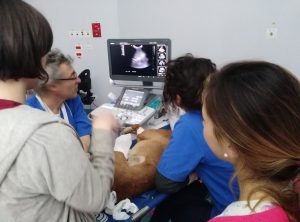Serum ferritin and paraoxonase-1 in canine leishmaniosis
Martinez-Subiela S, Cerón JJ, Strauss-Ayali D, Garcia-Martinez JD, Tecles F, Tvarijonaviciute A, Caldin M, Baneth G.
Serum ferritin and paraoxonase-1 in canine leishmaniosis
Comp Immunol Microbiol Infect Dis. 2014 Jan;37(1):23-9. doi: 10.1016/j.cimid.2013.10.004.
Abstract
Ferritin and paraoxonase-1 (PON-1) were measured in dogs experimentally infected by Leishmania infantum (during experimental infection and following treatment) and also in naturally-infected dogs which presented different degrees of proteinuria. Experimentally-infected dogs were monitored for 7 months post-infection, then treated for 3 months with allopurinol, and their response to therapy was followed for 11 additional months. Naturally-infected dogs were staged based on the urine protein/creatinine (UPC) ratio into three groups as follows: group 1 (non-proteinuric; UPC ratio: <0.2), group 2 (borderline proteinuric; UPC ratio: 0.2-0.5) and group 3 (proteinuric; UPC ratio>0.5). An increase in serum ferritin values and a decrease in PON-1 activity were observed 2 months after infection. Both analytes returned to preinfection values following treatment. Significantly higher concentrations of ferritin were observed in dogs classified as either borderline or proteinuric when compared with non-proteinuric dogs whereas serum PON-1 activity was decreased only in proteinuric dogs
.






 Il Direttore Sanitario Dott. Marco Caldin
Il Direttore Sanitario Dott. Marco Caldin